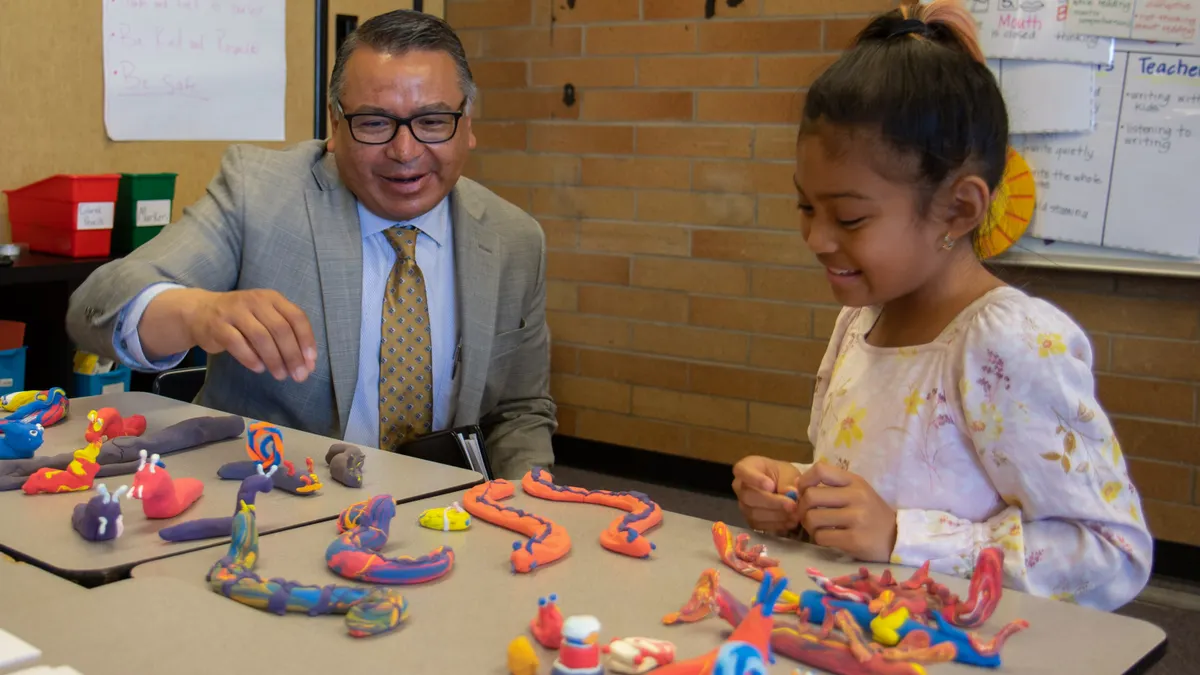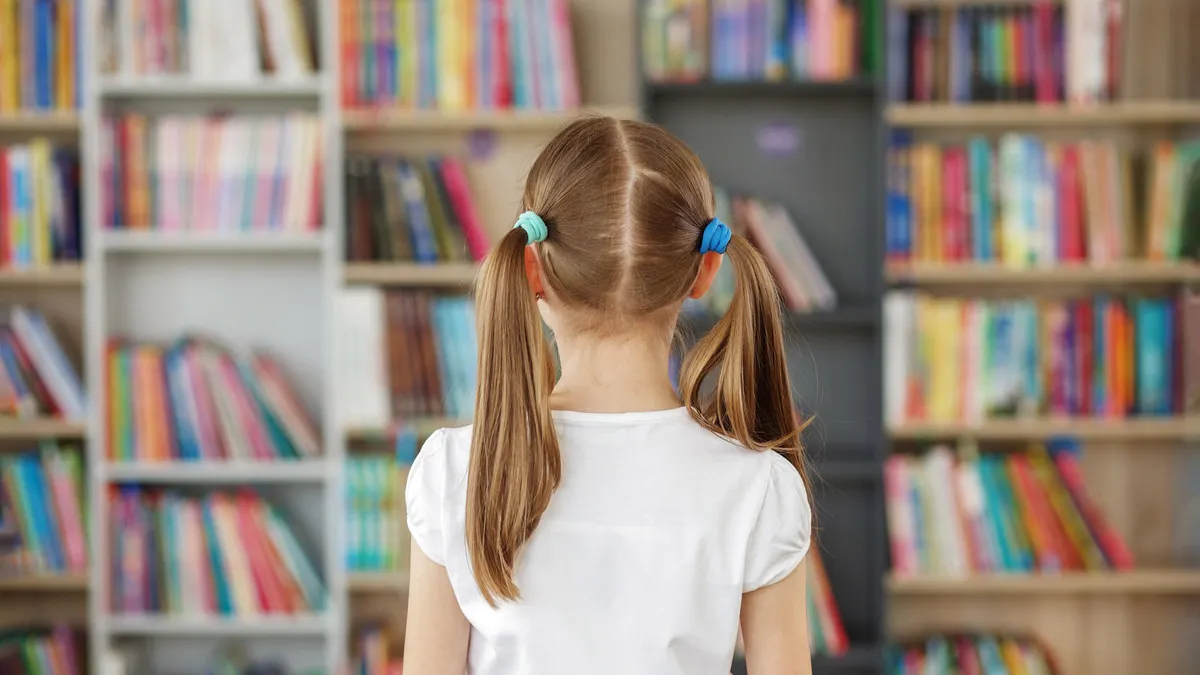In the 2014-2015 school year, Prince George’s County Public Schools District in Upper Marlboro, MD, instituted a pilot program to integrate the arts into curricula at 14 of the district’s schools. The program was initiated by John Ceschini, the district’s Arts Integration Officer, who wanted to offer professional development for educators to integrate the arts into an array of subjects, including STEM subjects.
“The arts, as we know, are very hands on and very engaging, and making the learning centered around the students themselves...it makes it more real to the students,” Ceschini said. “We talk a lot about creativity and how the arts include creativity, but the arts don’t have a monopoly on that.”
The pilot proved to be a success, and the program has now expanded to 65 of the schools in the district. The integration of arts into STEM fields, is called STEAM, which introduces arts and design concepts, tools and lessons into classes focusing on science, technology, engineering and mathematics.
STEAM gains popularity for non-traditional approach
The STEAM movement has been gaining traction during the past few years, but it draws upon commonly-accepted notions that scientific pursuits benefit from artistic understanding, and vice versa. A 2013 report stated that STEM disciplines “require artistic thinking to ensure that the final design appeals to the aesthetic sense of consumers in the products created for the commercial market.” The report also cited the need for artistic understanding in architecture, industry design and digital media.
Babette Allina, the executive director in Government Relations and External Affairs for the Rhode Island School of Design, said incorporating the arts into STEM subjects could help a more diverse set of learners with differing interests. She also said engineers and technical experts benefited from artistic interest and proficiency.
“It does start making it an interdisciplinary conversation, and it’s the students that are the cross pollinators,” she said.
Allina noted that research conducted by the National Endowment for the Arts indicated a strong correlation between experience with arts education and positive student outcomes. Students with higher levels of arts engagement were found to have higher GPA scores and more aspirations for college, and students with low or no arts credits in high school were five times less likely to graduate.
The Rhode Island School of Design is an avowed proponent of STEAM education, and supports the STEM to STEAM Initiative, which advocates for the approach to educators, lawmakers and private industry leaders. The school encourages integrating art and design into K-20 education, and tries to influence employers to employ more artists and designers.
“It was this idea that a lot of innovation comes from creativity, and industries are looking for creative talent,” Allina said. “We saw industry actually directly investing in schools to turn STEM to STEAM.”
Effective integration of arts into curricula with faculty input
Such integration was paramount to Ceschini as he worked to incorporate arts education into Prince County’s public schools. Ceschini secured grant funding from Crayola in 2013 when he was a principal at Seven Oaks Elementary School in Odenton, MD, to utilize art education strategies in a school that was focused on teaching STEM. The funding helped Ceschini develop professional development programs to assist educators in developing curricula that incorporated the arts but fulfilled the standards in Common Core and the Next Generation Science Standards.
Crayola is the creator of creatED, a professional development program that endeavors to help educators develop teaching approaches incorporating art strategies. Dominique Young, a Crayola professional development leader, said the company wanted educators to understand that the visual arts were transferable across curricula. She said educators sometimes felt challenged, questioning how they could approach arts integration.
“A lot of teachers feel they aren’t creative enough to bring in and access these strategies,” she said.
Ceschini and Young both asserted that schools needed learning teams to introduce art integration programs to schools. Ceschini said he sometimes encountered challenges in assisting teachers to look beyond their own particular subject matter to work with teachers of different subjects.
“There needs to be collaboration across different teachers from different departments,” he said. “If you just meet as a math department of a science department, you won’t be able to incorporate those other skills you might get by talking to colleagues.”
Ceschini also stressed the need for school administrators to grant teachers the opportunity to take chances with curriculum and approach, saying that if educators wanted students to be willing to take risks, educators must be afforded the same latitude. In terms of scaling the program, Ceschini said it was vital for administrators and principals in each school to be responsive to the idea from the start.
“By having the principals sign on board, we started to have the basis for this program to work,” he said. “As this goes on and we bring more resources in, it’s them seeing it work in other schools. As some of our beginning schools become models, it helps schools that are just coming on board.”
Positive responses helping the school forge ahead
The response from educators to the program has been positive, according to Ceschini. Eileen Lengenfelder, a STEAM teacher at Edward M. Felegy Elementary School, said she saw students learn how to communicate with the peers and debate which strategy is more appropriate. She found STEAM was best suited to an elementary setting.
"It has 'softer corners' than STEM. The challenges are language arts based, like 'Little Red Riding Hood can’t find her basket, can you make something to help her carry the goodies to grandma’s house?'" she wrote in an e-mail. "You can hear students talking to one another saying, “That won’t hold the muffins! They will fall right through! We need a solid bottom to make it work!” The students use rulers and other measurement tools without realizing they are using math. They test for load capacity and are totally unaware that it is a science skill."
Ceschini said students reported to him how much fun they had been having in the classroom with the integrated art strategies, and he said this spirit of buoyant camaraderie would benefit students in their educational and professional futures.
“They’re going to have to collaborate with people to solve problems,” he said. “It might be noisy in those classrooms, but it’s good noise, and it’s students talking about their educational processes.”





 Dive Awards
Dive Awards













